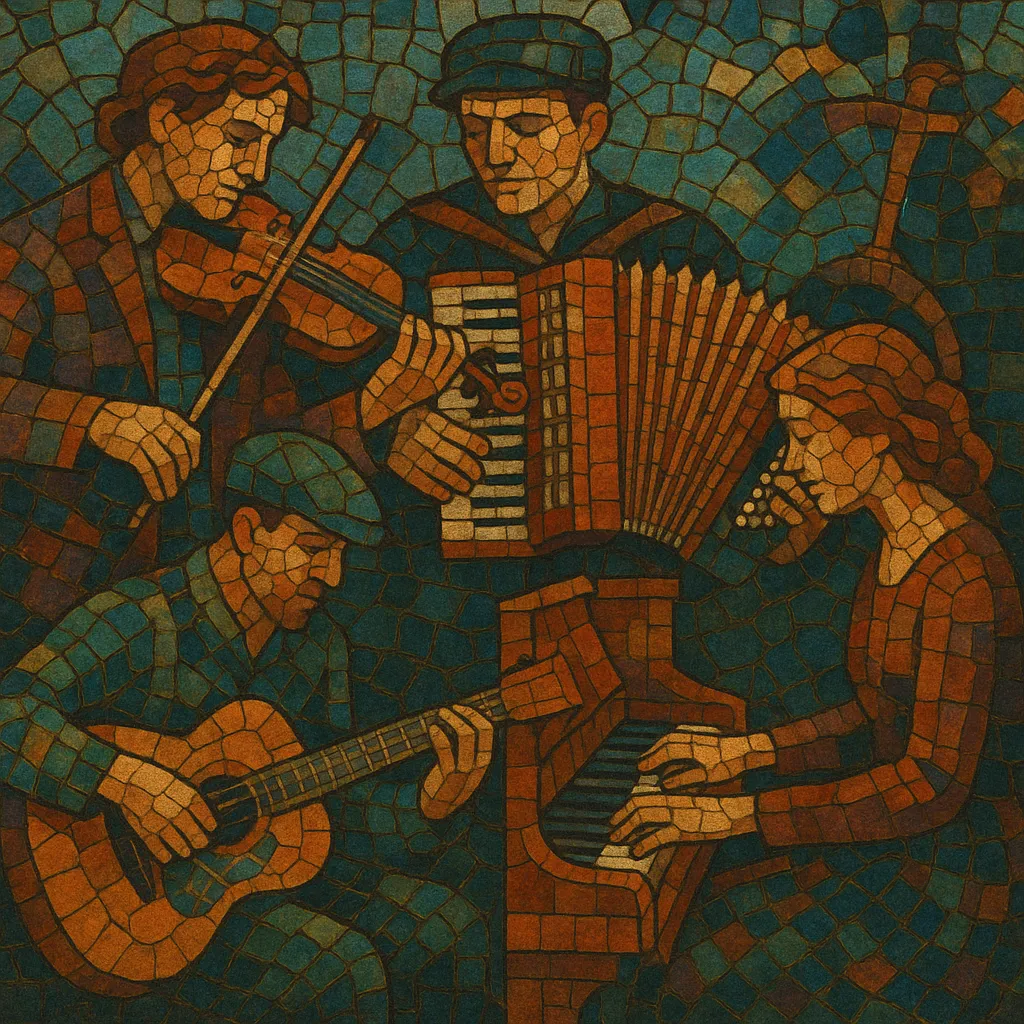Scottish country dance music is the lively, highly structured dance-band tradition that accompanies Scottish country dancing. It centers on tune types such as reels (2/2), jigs (6/8), strathspeys (4/4 with the distinctive “Scotch snap”), and hornpipes (4/4 with a gentle swing).
The core sound is led by fiddles and/or accordion, supported by piano (vamping left hand and chordal right hand), with occasional guitar, bass, and light drums. Tempi and phrasing are optimized for dancers, typically in 8-bar phrases forming 32-, 40-, or 48-bar tunes repeated to fit dance sets (e.g., 8×32 bars). The style emphasizes lift, rhythmic clarity, and clean articulation so dancers can feel each step.
Modern bands inherit a long tradition that blends older Scottish and English country-dance idioms with Baroque-era harmonic sensibilities and, later, the tight ensemble approach of 20th‑century British dance bands.
Scottish country dance music took shape in the 1700s as Scottish musicians adapted the fashionable English country-dance repertoire to local tastes, adding distinctly Scottish rhythmic feels and tune types. The strathspey emerged in the mid‑18th century in the Spey valley, marked by dotted rhythms and the characteristic short–long “Scotch snap.” Fiddlers such as Niel Gow and William Marshall helped codify the idiom, while reels and jigs already shared deep roots across the British Isles.
Through the 1800s, reels, jigs, strathspeys, and hornpipes were played at balls and assemblies, often with piano and fiddle, sometimes alongside smallpipe or flute/whistle. By the late 19th and early 20th centuries, printed collections and civic dances ensured a stable repertoire. The music increasingly reflected neat phrasing and harmonization that suited organized social dancing.
In 1923, Jean Milligan and Ysobel Stewart founded what became the Royal Scottish Country Dance Society (RSCDS), standardizing dances, tempi, and musical requirements. The growth of Scottish dance bands—fiddle/accordion-led ensembles with piano and rhythm—was propelled by radio and records. Iconic leaders such as Jimmy Shand popularized a bright, precise style with impeccable phrasing for 8‑bar structures.
Postwar emigration and RSCDS branches spread the music worldwide. Bands refined arrangements (tight unisons, second fiddle harmonies, vamping piano, tasteful drums) while maintaining dancer‑friendly tempos. Contemporary leaders and RSCDS-affiliated musicians continue to record dedicated sets for reels, jigs, strathspeys, and hornpipes, sustaining a living tradition in community halls, festivals, and formal balls across the globe.


